Let’s sort our priorities straight right away. When it comes to avalanche safety, it shall not be about grams but rather about speed and reliability. Most of all, you need to know your equipment and know how to work with it quickly and surely. I am no expert nor mountain rescue.
I like to think about things and educate myself. Currently I am finishing a course to become ski touring guide. Through my experience from the mountains and other avalanche courses and travels, I had a chance to see and try dozens of probes. I made some notes and photos the last time and I am bringing my POV for you as well. I am leaving out all the carbon probes though.
Most of the people buy probes in sets with shovels and transcievers. Hence, I compare mainly probes coming from those sets.
Length
Imagine the use of the probe and think whether you really need 300 cm long probe. Will you really dig out a frined out of that depth in realistic time? Won’t the snow be so heavy that the person would be already crashed by it?
For another application, you are probably not going to dig snow profile up to 300 cm. Choose a usable length then, it definitelly is not the case of The longer, the better.
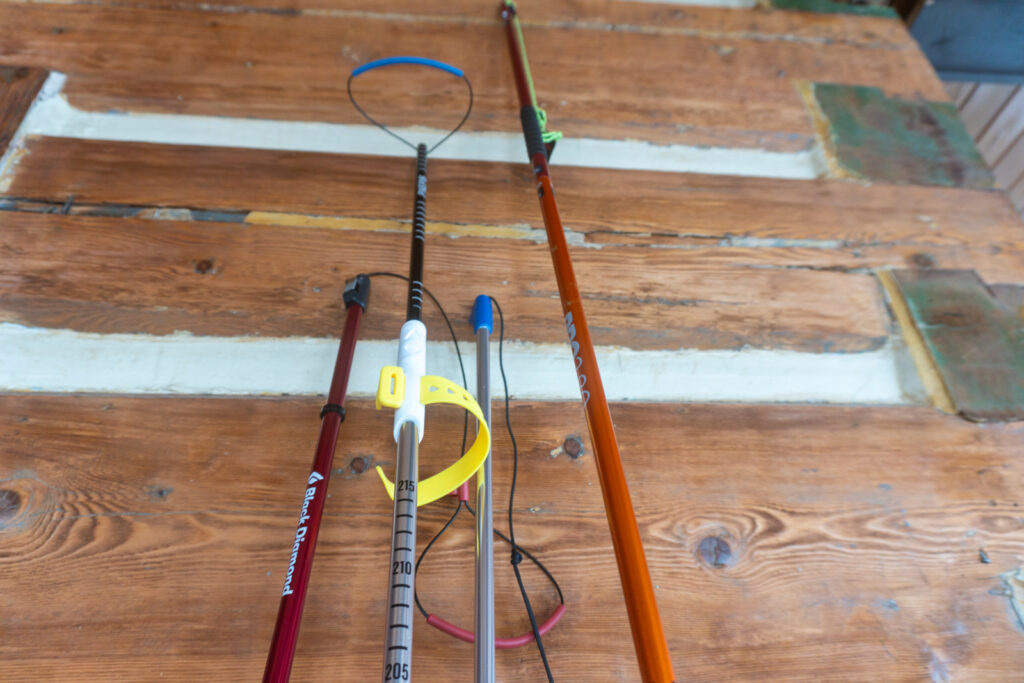
Probe of my choice: 240-260 cm.
Weight
Most of the probes are made out of aluminium of different wall width, hence are differently resistant to bending. More expensive probes are made out of carbon which makes them extremely lightweight but fragile. Unless you are a racer, think twice about carbon probes.
As mentioned earlier, do not worry that much about the weight, focus on readability of the depth measured. I am always looking for contrast of the numbers against material of the probe, size of those letters.
Quick operation beats the weight.
Design
Less you think in the stressfull situation such as avalanche accident, the better. Once you locate your frined using your avalanche transciever in a certain depth, you want to confirm a positive probe in approximatelly same depth. Having a probe with variating color segments is very helpful. Opposite of what you want is a probe in one color without visible depth markings with large numbers.
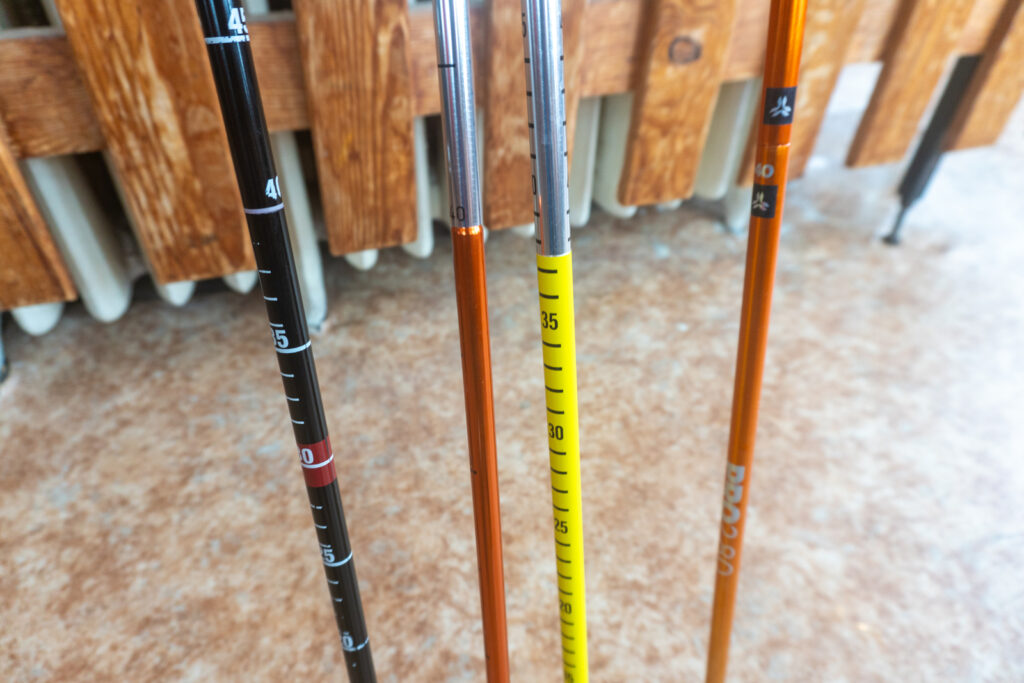
When you are diging snow profile analyzing layers of snow, you need as many markings as possible.
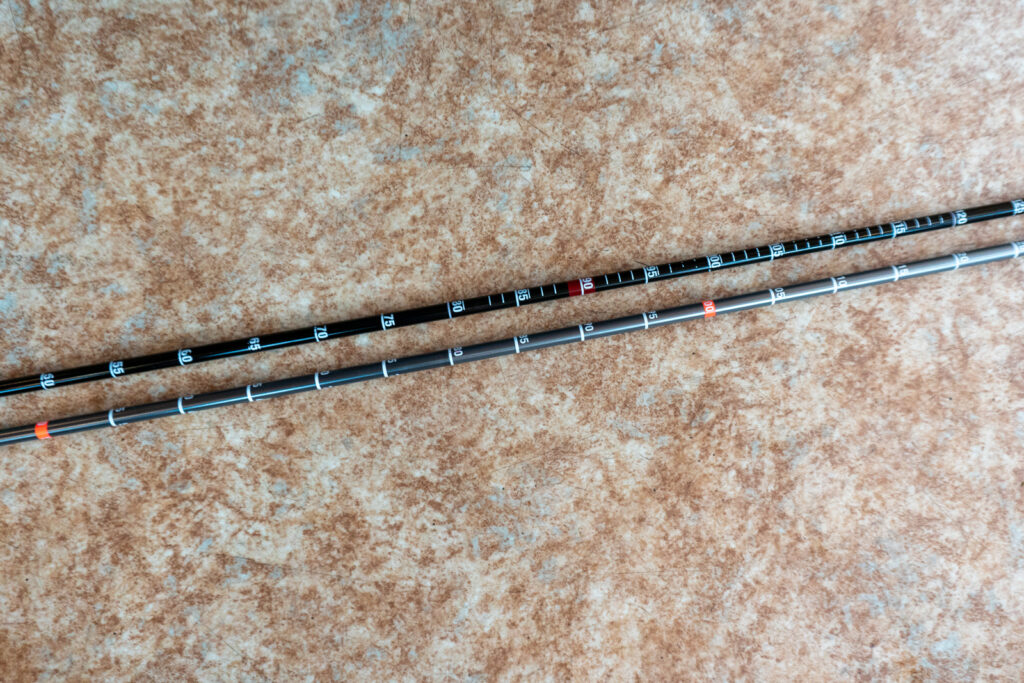
Probe of my choice: variating segments colors, big numbers, markings by selected depths such as 30/60 cm, smaller markings each centimeter
Locking system
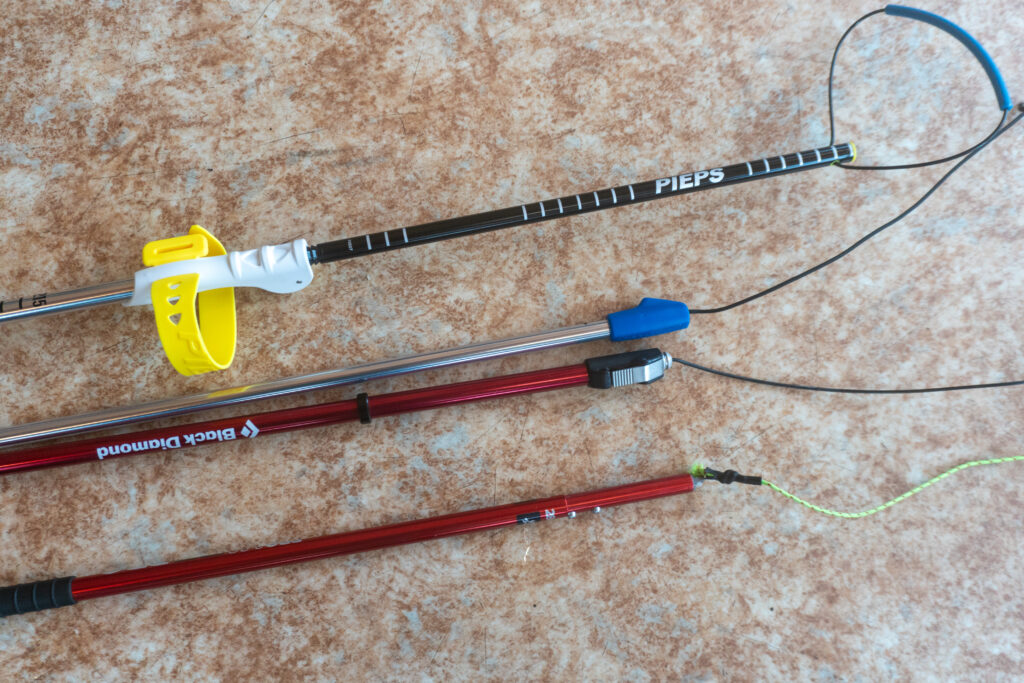
Always try the locking system in the gloves. Some are bigger like the PIEPS and some are minimalistic, like the Arva. I prefer the metal ropes over the textile ones. The worst were the pins at Arva’s probe. They froze over 2 hours outside and I could not fold the probe down untill it warmed again inside the cabin.
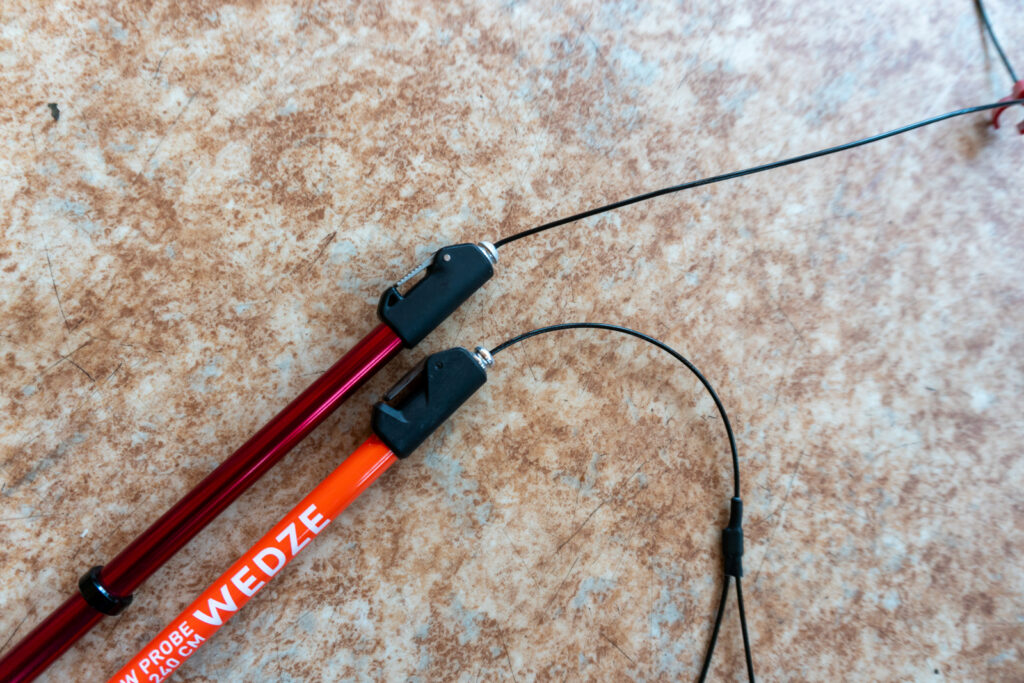
Tips
I haven’t experienced any reduced capability of peiercing the snow or ice for any of the tested probes althoug the tips are designed differently.
Any of the tips were capable of piercing packpacks, rain covers or jackets. Which is a risk of the sport, I guess.
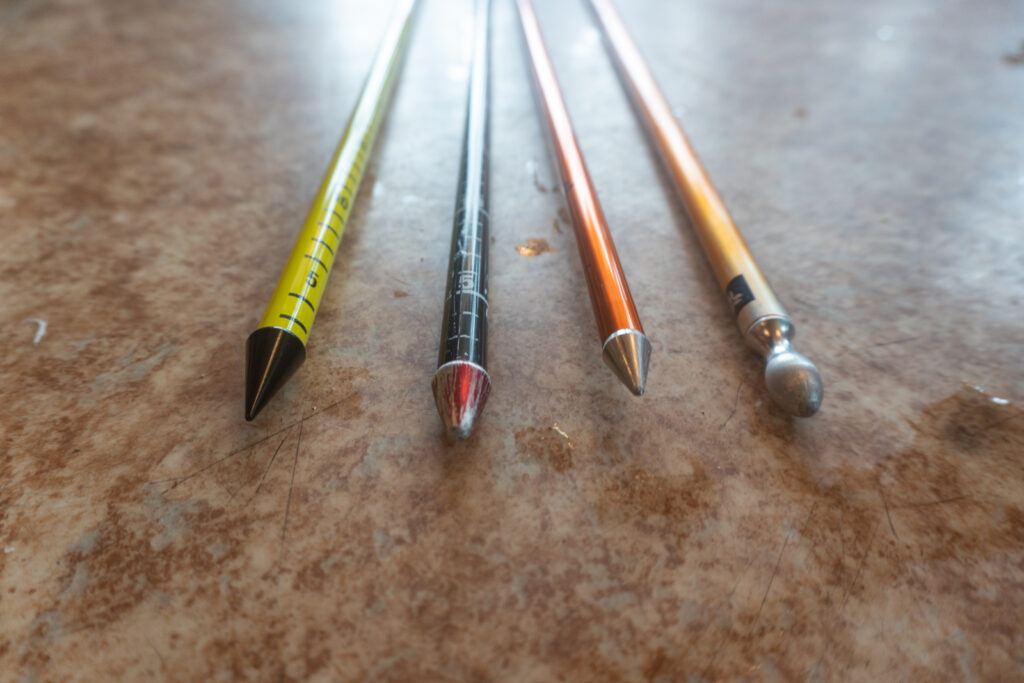
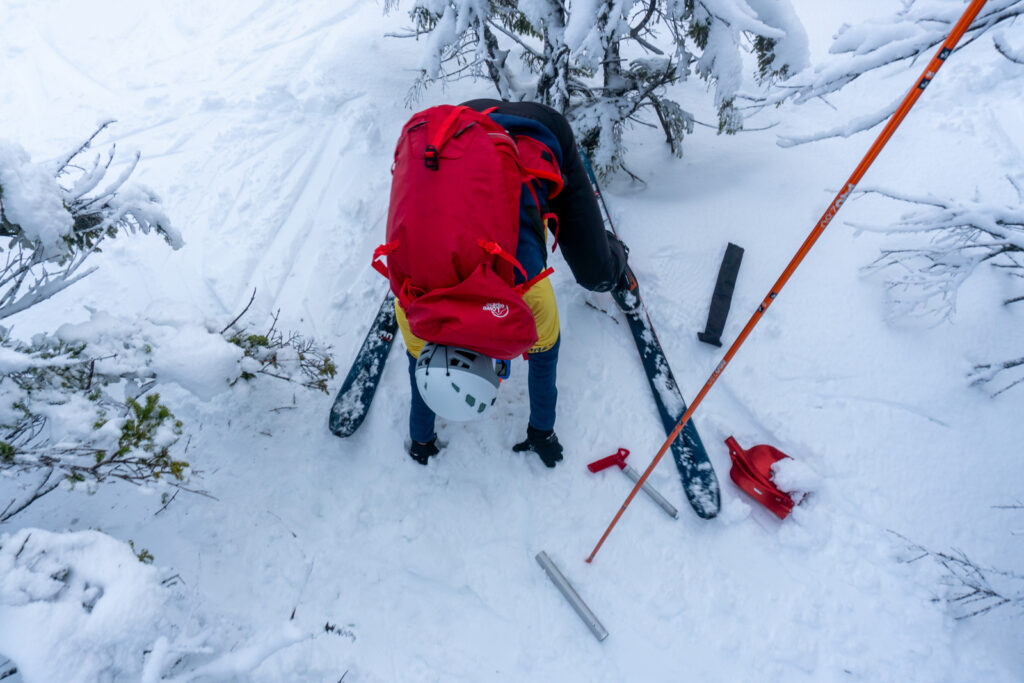
Conclusion
I made a comparison of the most common probes in the table below. Values are percentage value of an ideal state. Indexes are diff to an average ideal of 295 g weight and 250 cm length. As you can see, there is no one probe hitting the maximal marks and there are individual winners in each category. Overall, I find BCA probe the best, followed by PIEPS.
| 1 | 2 | 3 | 4 | 5 | 6 | 7 | |
| BCA | PIEPS | Black Diamond | Mammut | Wedze | Ortovox | Arva | |
| density of markings | 95 | 95 | 95 | 50 | 66 | 50 | 33 |
| colored segments | 50 | 95 | 0 | 50 | 0 | 50 | 20 |
| readability | 95 | 50 | 70 | 66 | 66 | 25 | 33 |
| size of the numbers | 80 | 80 | 70 | 50 | 50 | 25 | 50 |
| fix system | 80 | 75 | 90 | 80 | 95 | 80 | 75 |
| weight index | -0,186 | 0,119 | 0,051 | 0,186 | -0,119 | 0,203 | 0,119 |
| length index | -0,320 | 0,120 | -0,200 | 0,040 | -0,040 | -0,320 | -0,320 |
| 57,071 | 56,463 | 54,175 | 49,364 | 46,147 | 38,367 | 35,186 |




